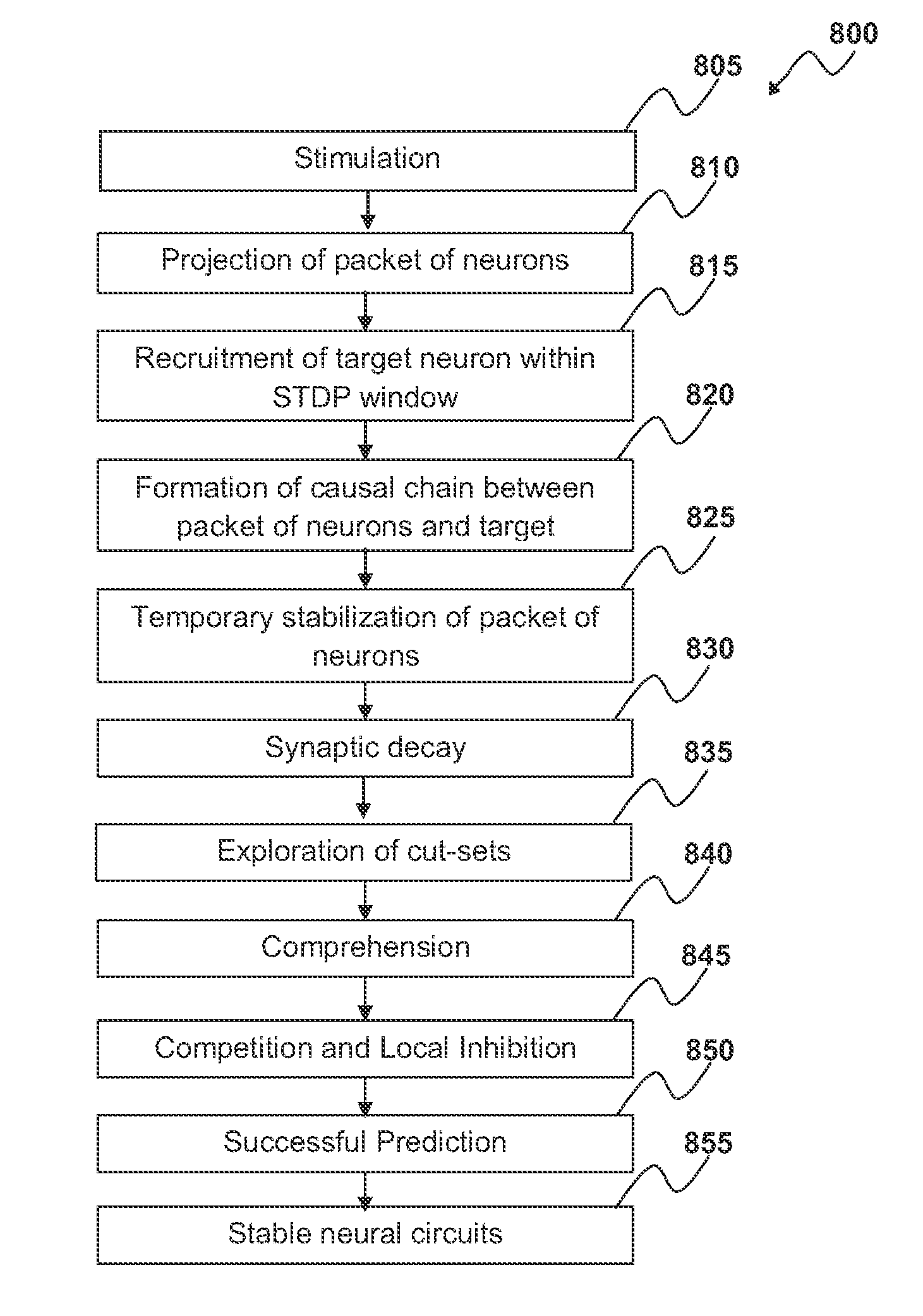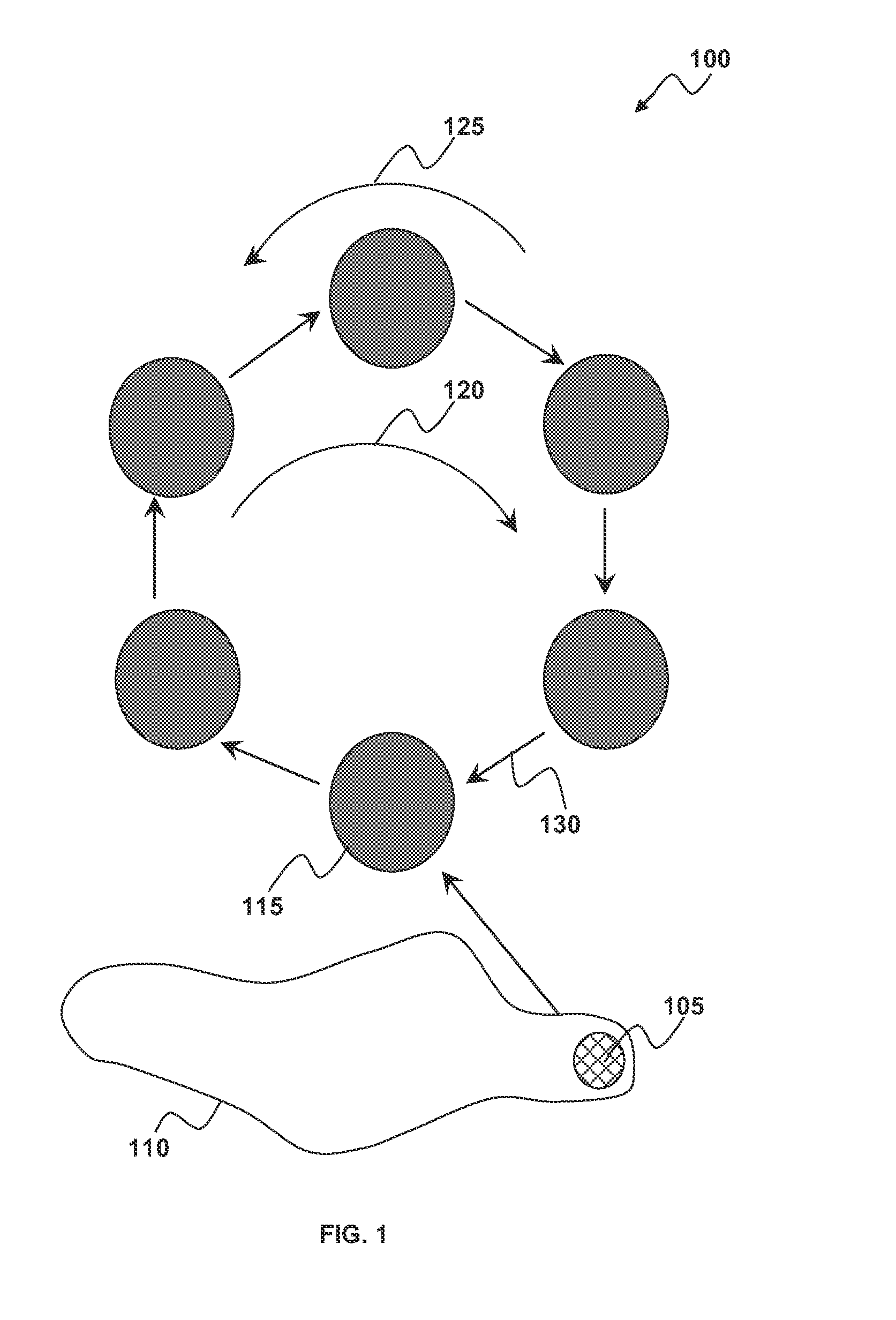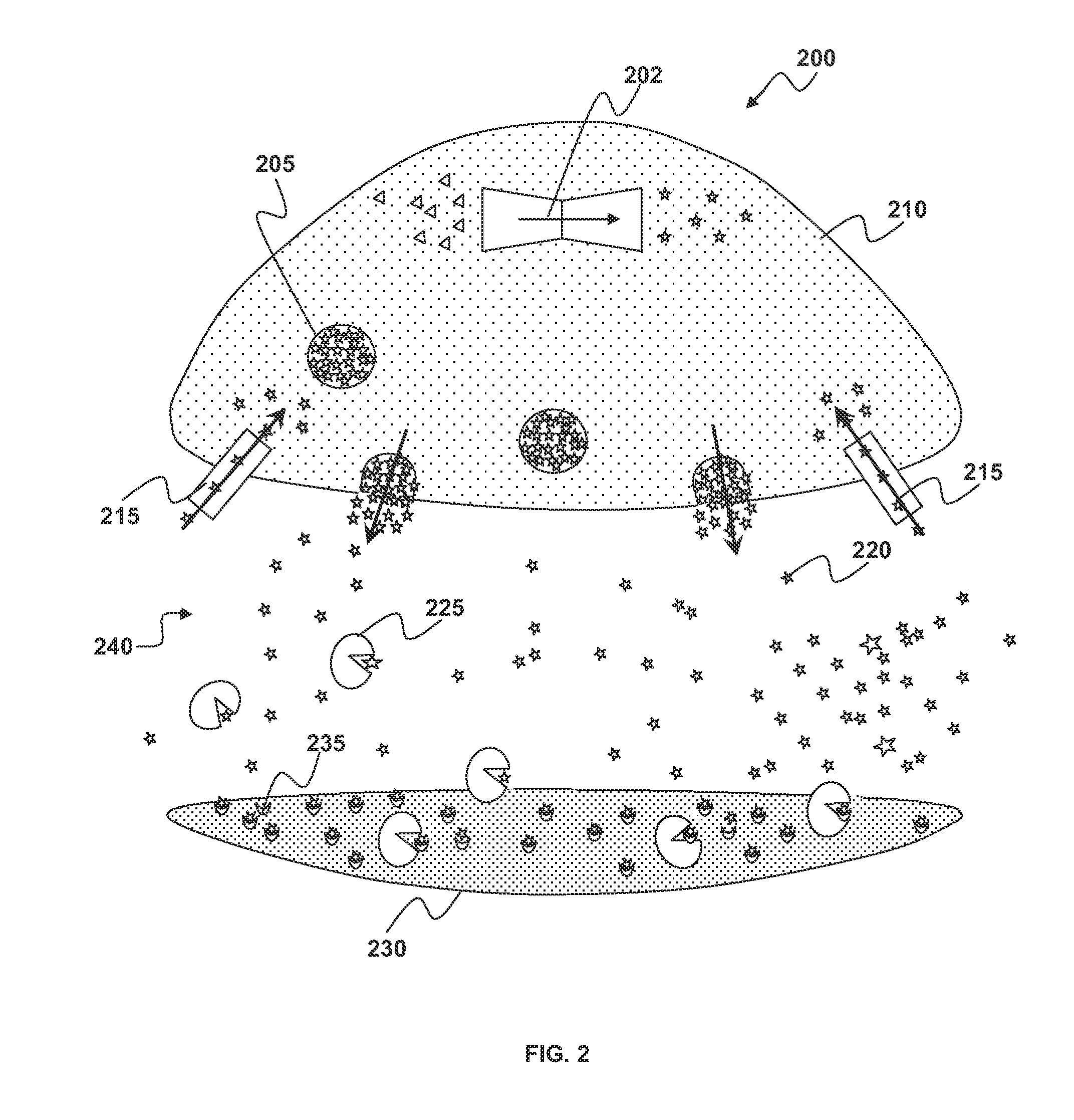Framework for the organization of neural assemblies
a neural assembly and neural network technology, applied in the field of artificial neural networks, can solve the problems of assembly eventually decaying, the axon of the neuron will decay, and the cell will eventually kill itsel
- Summary
- Abstract
- Description
- Claims
- Application Information
AI Technical Summary
Benefits of technology
Problems solved by technology
Method used
Image
Examples
Embodiment Construction
[0029]The particular values and configurations discussed in these non-limiting examples can be varied and are cited merely to illustrate at least one embodiment and are not intended to limit the scope thereof. Note that in FIGS. 1-5, identical or similar parts or elements are generally indicated by identical reference numerals.
[0030]Artificial neural networks are modes or physical systems based on biological neural networks. They consist of interconnected groups of artificial neurons. Signaling between two nodes in a network requires the production of packets of signaling particles. Signaling particles could be, for example, electrons, atoms, molecules, mechanical vibration, or electrommagnetic vibrations. Neurons and neurotransmitters in biological neural network are analogous to nodes and signaling particles in artificial neural networks respectively.
[0031]FIG. 1 illustrates a schematic diagram of a comprehension circuit 100 in a neural assembly, in accordance with the disclosed e...
PUM
 Login to View More
Login to View More Abstract
Description
Claims
Application Information
 Login to View More
Login to View More - R&D
- Intellectual Property
- Life Sciences
- Materials
- Tech Scout
- Unparalleled Data Quality
- Higher Quality Content
- 60% Fewer Hallucinations
Browse by: Latest US Patents, China's latest patents, Technical Efficacy Thesaurus, Application Domain, Technology Topic, Popular Technical Reports.
© 2025 PatSnap. All rights reserved.Legal|Privacy policy|Modern Slavery Act Transparency Statement|Sitemap|About US| Contact US: help@patsnap.com



